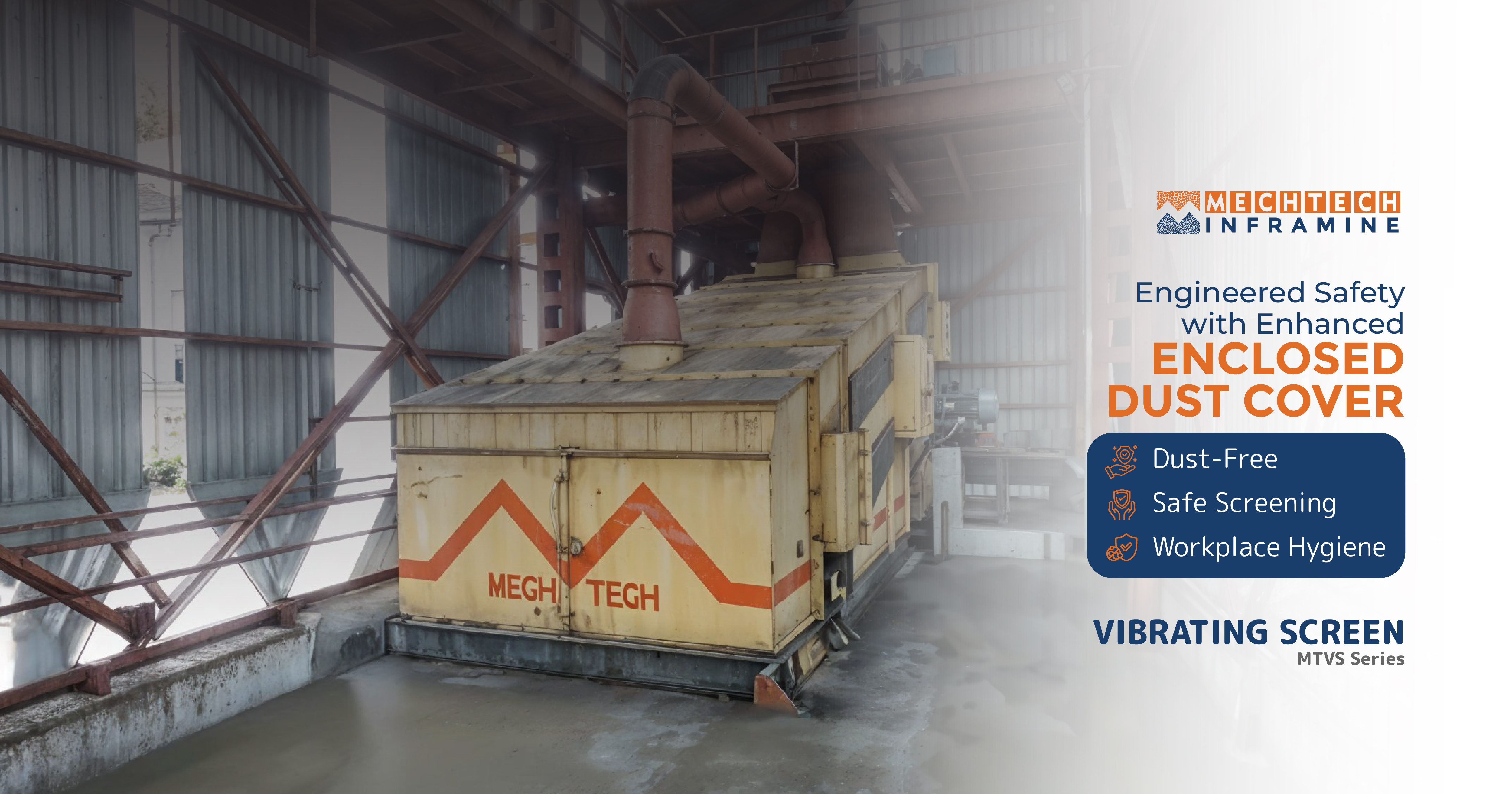Cleaner Screening, Safer Workspaces – The Role of Enclosed Dust Covers in Vibrating Screens
In modern material processing, the challenge of controlling dust has grown more significant than ever. As industries move toward more sustainable and regulation-compliant operations, the impact of airborne dust can no longer be overlooked. Whether it's the mining sector, construction aggregates, or mineral processing plants, uncontrolled dust from vibrating screens can affect not just equipment and efficiency, but also people and the environment.
Understanding these growing challenges, Mechtech Inframine has introduced an important solution—an optional 360° enclosed dust cover for its vibrating screens. This feature isn't just an add-on; it's a practical step toward better plant hygiene, environmental responsibility, and long-term operational reliability.
Why Dust Control Matters in Screening Operations
Dust is an inevitable byproduct of high-speed, high-volume screening, especially when dealing with dry, granular, or powdery materials. In many plants, this fine dust becomes airborne, forming clouds that are not only harmful to breathe but also difficult to manage once dispersed.
Left unchecked, dust can settle on machinery, damage bearings and electronics, reduce visibility on-site, and expose workers to respiratory risks. Beyond health and safety, dust emissions often attract scrutiny from regulatory authorities, leading to possible fines or shutdowns for non-compliance.
The Enclosed Dust Cover: A Practical, Protective Addition
Mechtech’s solution is both simple and smart: an enclosed dust cover that completely surrounds the vibrating screen on all sides. By containing the screening zone, the cover prevents dust from escaping into the atmosphere, thereby addressing the issue right at its source.
Designed with durability and accessibility in mind, the dust cover integrates seamlessly with the screen body, allowing for easy maintenance without compromising the seal. It’s not a separate piece of equipment—it becomes part of a more efficient, environmentally conscious screening process.
Creating Safer, Cleaner Work Environments
One of the most immediate benefits of the enclosed dust cover is improved workplace safety. Operators no longer need to deal with persistent dust clouds or clogged filters in nearby equipment. The overall plant atmosphere becomes cleaner and easier to work in, boosting morale and reducing the risk of long-term health complications due to dust exposure. This also contributes to a more professional, organized workspace—especially important in facilities that must meet industry standards or undergo regular inspections.
Supporting Sustainability and Compliance
Environmental compliance is a key priority for many industries today. With local governments and global agencies imposing tighter emissions standards, plants need proactive solutions to remain ahead of regulations. By investing in an enclosed dust cover, Mechtech clients demonstrate a commitment to sustainability and responsible industrial practices. It’s a step that doesn’t just meet compliance—it reflects leadership in environmental stewardship.
An Optional Feature with Long-Term Value
Though optional, the enclosed dust cover offers long-term benefits that far outweigh its initial investment. Fewer maintenance issues, lower cleaning costs, extended equipment life, and a cleaner working environment all contribute to greater operational efficiency and cost savings over time.At Mechtech Inframine, the focus is not just on building machines—but on solving problems that matter in the field. The enclosed dust cover is one such solution: thoughtfully designed, field-tested, and built to serve.
Conclusion: Better Screening Starts with Cleaner Systems
Dust may seem like a minor issue in the grand scheme of crushing and screening, but its effects are anything but small. From equipment wear to employee health and regulatory pressure, airborne dust poses risks that can’t be ignored. With Mechtech’s enclosed dust cover, vibrating screens become not just efficient tools for separation—but cleaner, safer, and more responsible systems. For companies aiming to upgrade their screening operations while maintaining environmental and workplace standards, this optional feature is a smart and strategic choice.





